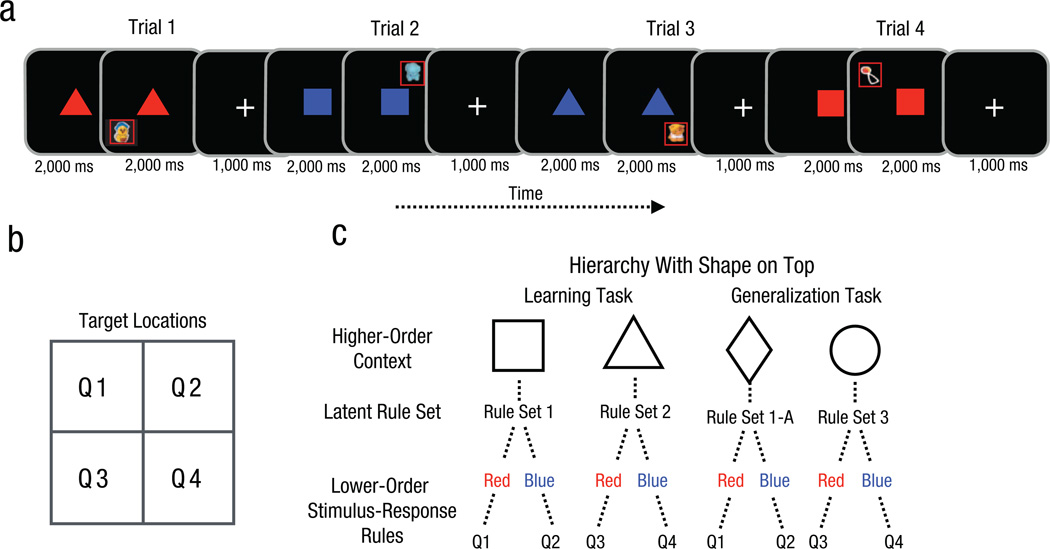Fig. 2.
Sample trial sequence and paradigm from Experiment 1. Each trial in the learning task (a) began with a centrally presented cue that varied in color (red or blue) and shape (square or triangle). Then an animated toy (the target) appeared in one of four quadrants of the computer screen (b). Eye movements were measured to determine how quickly infants looked toward the quadrant containing the target stimulus (highlighted here by the red box). Infants could use shape as a higher-order context to cluster the pairings into latent rule sets specifying lower-order color/target-location rules (c). The generalization task was similar to the learning task, except that the shapes were a diamond and a circle. The color pairings for one shape were the same as in the learning task, but the color pairings for the other shape required a new rule set.

